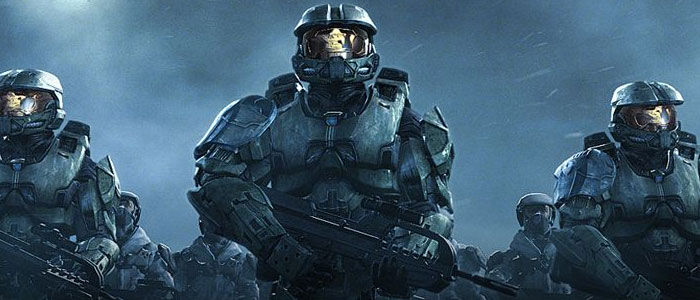Commanding multiple units in the wide open battles native to the Halo series is a really good idea. Halo originally started out as a real-time strategy, and it’s a great thing that Ensemble took that idea and made the game a reality. Halo Wars is a console only real-time strategy, and for most just the idea of that drives them crazy, but Halo Wars works. That’s it. It works just like I would want it too. Controlling the game becomes second nature shortly after running through the tutorial and is never an obstacle again. Being a console only RTS though has its drawbacks.
The only real problem I had when playing Halo Wars was the lack of real depth. There were several moments where I was just waiting for something to build searching every building for more to build or research. Straight up rock, paper, scissors is how Halo Wars functions. Infantry beats aircraft, vehicles beat infantry, and aircraft beat vehicles. Using such a simple method of unit strengths and weaknesses makes for an interesting but shallow experience.
Unit mixture is the only thing that really matters in any engagement. There are a few special powers you can use to turn the tide of any given battle but all of those have cool down timers that make them not too overpowered. Every unit has a special ability and every commander has special powers they can use to their advantage. The special powers work really well and add a good amount of interest and last ditch effort ability for everyone to use.
The campaign of Halo Wars has 15 missions total that don’t take that long to beat on Normal. The cinematics in between missions are stunning and are a good reason in and of themselves to play through the campaign. Everyone is beautiful to watch and add some depth to the characters and story of the game. Since Halo Wars is set 20 years before the events of Halo: Combat Evolved the story can’t really do anything that would shake the foundation the three Halo shooters have set. Even with that restriction the story ends up being important and helps to fill in some of Halo’s past.
Multiplayer in Halo Wars is where the longevity of the game will come from. Matchmaking has finally been done right in an RTS because it uses the same matchmaking system as Halo 3. You pick what type of match you want to play (1 vs. 1, 2 vs. 2, or 3 vs. 3) and it automatically matches you up with opponents. You don’t get to see which commander they pick or what map you’re going to play on but that really helps out with incessant quitting found in a lot of real time strategies online. Lag has also been a huge problem with console RTS online but luckily Halo Wars doesn’t seem to lag too badly.
There were several moments where I could tell it was lagging but it never really got in the way of playing. Usually it would lag for a couple seconds then fix itself, even in the ridiculously large scale fights of the 3 on 3 matches with units fighting on both ends of the map. The biggest problem online wise for this game is that several times when we were playing, the game came to a complete stalemate as we just killed each other’s units and then would have to retreat back to our base to make more, just to do it all over again. Any stalemate will eventually turn towards one side or another but for a while it can get really annoying.
Halo Wars is the best real time strategy on consoles right now and it can be a lot of fun, but the relative lack of depth for such a usually deep genre can get old after a while. If you don’t have a PC equipped to run the newest high-end games then Halo Wars is a great option. Halo fans will also really enjoy the story and setup of the game but if you want heavy strategy and depth, Halo Wars is not as high on the list as some more intrinsically deep real time strategies.
